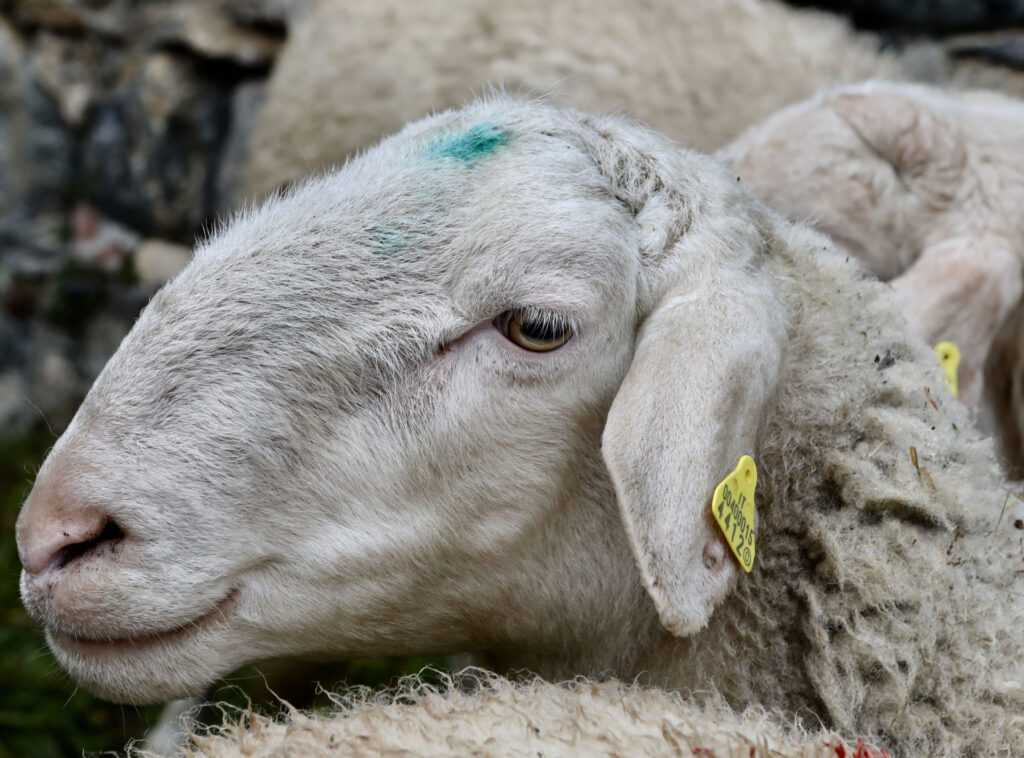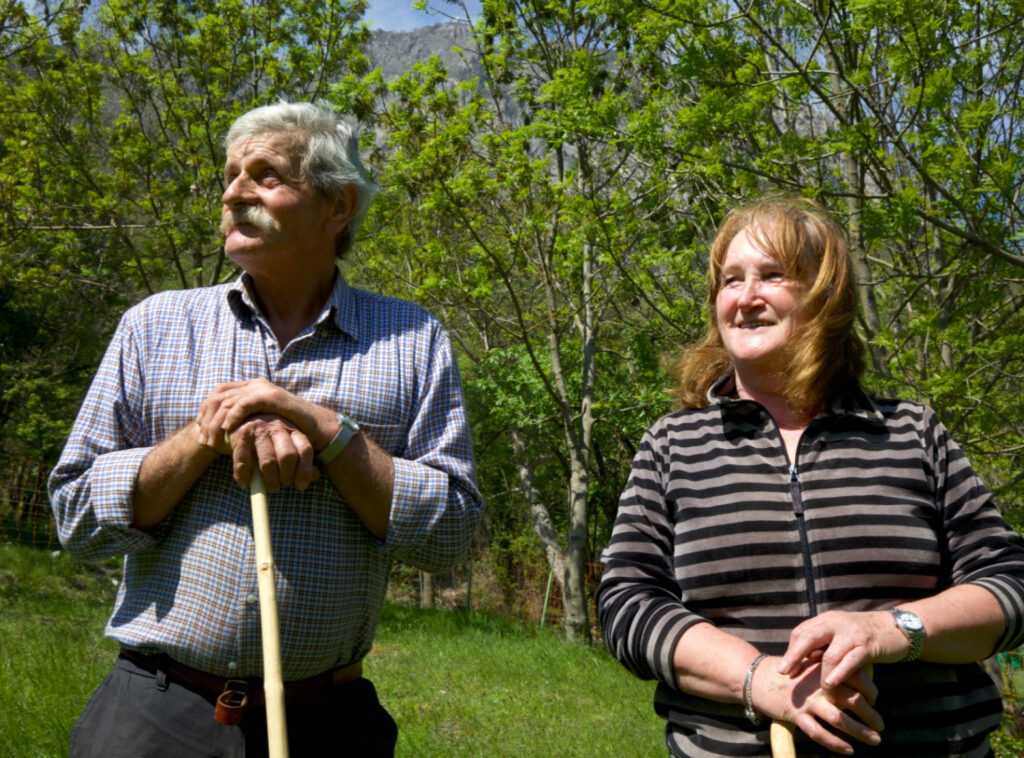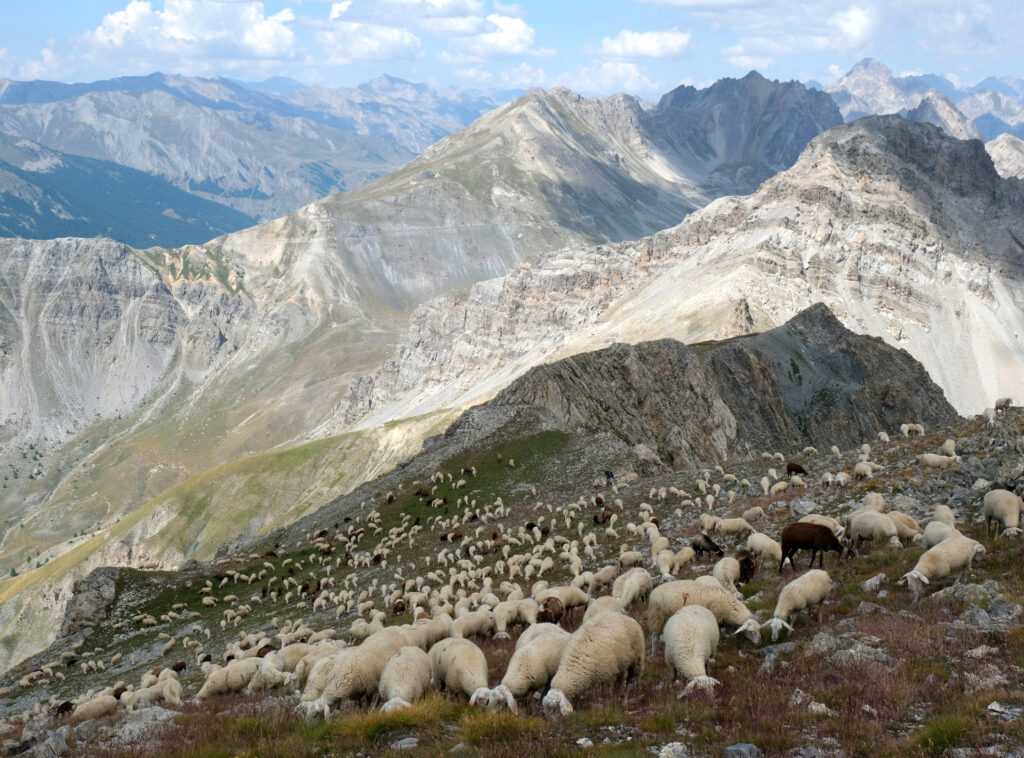The Sambucana Sheep

The Sambucana sheep breed, indigenous to the Stura Valley, is a hardy animal, capable of living even on uncomfortable and steep rocky pastures, adapted to high altitudes and withstanding low temperatures. Its agility allows it to cross steep ravines and abrupt slopes, to overcome rocky walls following the draios, to reach the highest peaks and to be able to graze the tastiest grass, not yet trampled by other animals. It is thanks to these abilities that the Sambucana sheep provide products of the highest quality: first-rate meat with a delicate flavour, fine and dense wool which is used as a natural insulator and is very resistant when spun. The Sambucana sheep’s milk is used first to feed the lambs and then to turned into milk for the family and for sale. In spite of its valuable characteristics, the Sambucana sheep breed suffered a considerable decline in numbers in the 1970s: in the 1980s there were no more than eighty sheep purely bred in the Stura Valley, distributed among three farms, out of a total of over five thousand head.

The causes of the decline are to be found in the cross-breeding of the Sambucana sheep with rams of other breeds in order to obtain larger lambs. This has led to a number of disadvantages: the loss of genetic and morphological characteristics, a lower meat yield, a conspicuous reduction in the quality of the wool, an increase in dietary requirements, less hardiness and therefore less adaptability to the environment.
Since 1985 the Stura Valley Mountain Community and the Piedmont Region have thus supported a work programme aimed at recovering and enhancing the Sambucana breed, in order to transform it into an economic resource for the Valley’s farmers. The first recovery initiative was the involvement of a dozen breeders who were strongly interested and willing to collaborate with the breed experts and technicians of the Mountain Community. These breeders thus set up the ‘L’Escaroun’ Consortium, which in the Languedoc language means ‘small flock’. Subsequently, numerous breeders in the valley joined the Consortium, which currently has around sixty members.

Among the many activities of the Consortium, the study of breed characteristics, the creation of a ram selection centre, the revival of the ancient fair of the Santi di Vinadio through the creation of the Sambucana sheep exhibition and the organisation of marketing are very important. The Consortium is aware of the way in which the lambs are reared: it guarantees that the sheep reared by its members and sold in shops displaying the Sambucana lamb brand are nourished on the milk of ewes fed exclusively on locally produced hay or fresh grass from the mountain pastures.
The creation of the label is one of the most important steps in the marketing of Sambucana lamb because it allows the consumer to know the quality and origin of the product purchased. Nowadays, the Sambucana sheep breed is present in the valley in numbers of about 5,500 head, distributed among about sixty farms.

Another equally important initiative to promote the Sambucana sheep was the launch of an association to sell lamb meat, through the creation of the ‘Lou Barmaset’ cooperative, which annually markets around 10,000 lambs from local farms.
The work of all these years has produced remarkable results, the most prestigious of which is the recognition of the Sambucana sheep products as a Slow Food Presidium (click on Slow Food Presidium to go to the website Agnello sambucano – Presìdi Slow Food) and as a Traditional Agricultural Product (PAT) of the Piedmont Region.
For the enhancement of the wool, experiments have been carried out over the years with the Piacenza Wool Mill in Biella and the Lane Italia Agency. The Sambucana wool items made can be purchased at the Eco-museum sales point in Pontebernardo, at the headquarters of the Unione Montana and at the ‘I Lauri’ cooperative in Demonte.
